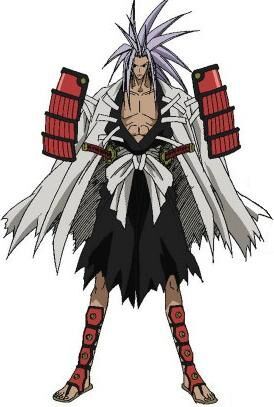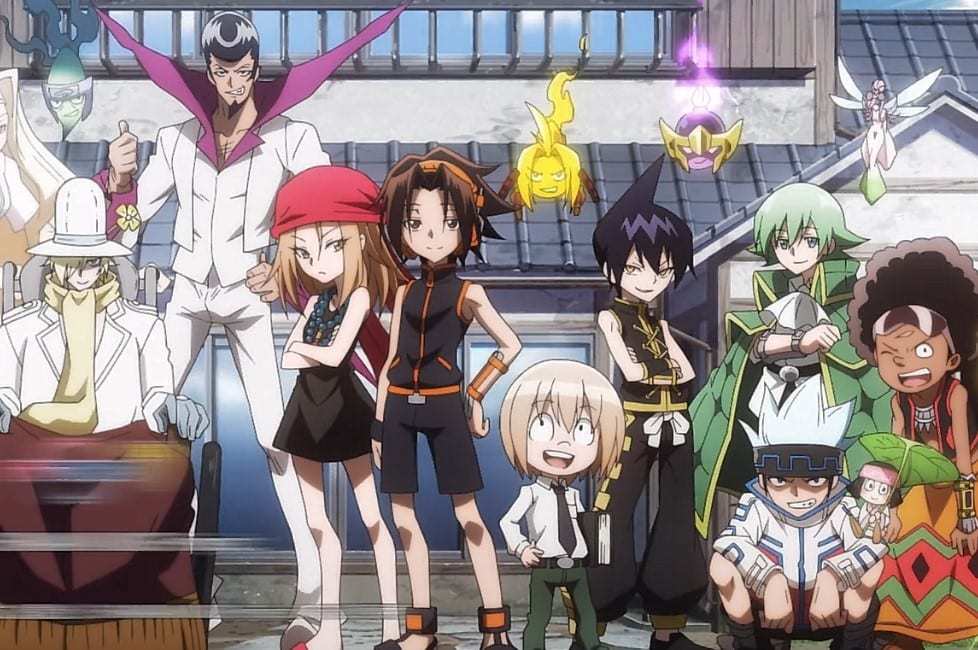The stakes? High. The monsters? Big. The theme song? Slaps.
If there was a checklist for early turn of the millennium anime, those would be the three touch points. With Pokémon and Diliman bringing Japanese animation to Saturday morning cartoons in the late 90’s, there was an influx of shows being dubbed and put out on broadcast TV. This would be the first place I saw Yu-Gi-Oh!, Ultimate Muscle, Cardcaptor Sakura, and Shaman King. 4Kids entertainment made my middle school years what they were – colorful and melodramatic.
These shows had satisfying, wholly fulfilled endings (for those that have ended), with one glaring exception. Shaman King left a bad taste in my mouth through my teen and adult years. This was nothing to do with its quality as a show and everything to do with the fact the show simply never found its ending. Now, Shaman King did have an ending, in that there was a conclusion to the narrative. But even at 16 years old, I wanted -more-. I felt like it wasn’t over. Turns out there was a reason for that.
Start From the Top
Shaman King tells the story of Asakura Yoh, a gifted but laid-back shaman warrior from a noble shamanic family. In the universe of this anime, a shaman is one that can commune with the dead. In real life, the shamanic tradition is one of communing with spirits both good and evil and is indigenous to both North America and Northern Asia.
I love representation, and I love learning. I was always charmed by the little bit of both of those I received from this show.
Every 500 years, there is a great tournament held known as the Shaman Fight. The winner of the Shaman Fight becomes Shaman King, and communes with the Great Spirit to reshape the world in whatever image they desire. Yoh seeks to become Shaman King and create a peaceful and, as I’m certain he would describe it, “chill” world without conflict.
Peace is but the Result of War
As our series progresses, Yoh makes friends, both living and dead. And enemies of the same range of alive-ness. There is his fiancée. . .fiancé? I can’t remember which it’s supposed to be. Anyway, Yoh’s betrothed is named Anna. In our first episode, Yoh meets and befriends Morty, his school’s requisite nerd and also a paranormal enthusiast. We also learn about shamans and the fact that each shaman has spirits that accompany them. Yoh befriends and partners with Amidamaru, a legendary samurai from the 15th century. He uses the warrior’s blade, infusing at different times himself and the sword with the warrior’s power.
As time goes on, Yoh also meets other shamans involved in the tournament. A thread that comes through often is the fact that Yoh has a gift for finding the good in people and ultimately helping them. Many of the opponents from the tournament wind up joining Yoh’s crew, and there is a strong feeling of JRPG party. In fact, I often compare this anime to the game Persona 5, as one of the game’s influences – party, accompanying spirits, copious amounts of sarcasm, a rocking soundtrack. Really, the similarities are endless.
Our narrative covers all the supernatural fantasy tropes – ghosts in spades, a pretty awesome zombie, vampires, fae folk, necromancy, even a Sherlock Holmes reference! Our heroes are fueled by the power of friendship, enemies becoming friends, and more or less every friendship trope one can think of. There is the lazy genius, the heir to the throne with far too much pressure on him, the tsundere, the femme fatale, the bully, the jock, and the dour indigenous man.
I could’ve done without the Native American “medicine man” trope, and the show’s portrayal of a Black character.
Hoping for Better
Throughout its history, anime has had a sordid relationship with Black and brown people. Especially guilty of this were many (very popular) anime from the 90s and 00s, specifically Dragon Ball, One Piece, and Shaman King.
From Usopp to Mr. Popo to Jaguar, these stories tend to use a common aesthetic that, even if not portraying an African character, certainly caricatures them. I approach this work with a grain of salt, knowing that this was a trend at time.
That being said, the show does a passable job with representation and not parody here, with the character of Jaguar hitting something of a sweet spot between Mr. Popo and Jynx (ignoring the issue and pretending that’ll make it go away) and Naruto’s Killer Bee (please stop rapping). It’s not wildly offensive as much as it is disappointing, and it’s also not beyond help in the future with a remake looming.
A New Story for the First Time
Shaman King debuted in the US in 2003, with its Japanese origins being in 2001. At the time, this posed the problem that not only was the manga not complete as the anime began, it was not complete when the anime ENDED. This led to a completely divergent storyline from the writer and, ultimately, the manga’s vision. With that in mind, there was a lot of filler in this series, and many moments that dragged or felt out of sorts despite a short runtime of 64 episodes.
As the series carried on, it would ebb and flow in finding a good pace, with much of the earlier show artificially dragging volumes of manga over multiple episodes, to whole segments being skippable to the primary storyline (especially in the US where censorship led to some other story beats being rendered moot or out of order).
I am a child of the “lost episodes” of anime, especially Saturday morning anime. Several years removed from the premiere of Shaman King in the US, there was an episode of Pokémon that saw Ash suddenly with 30 Tauros. The show itself would not explain why for another year after this was shown and frankly, I never thought twice about it. I would be a full-grown adult before I learned that an episode of the series was cut from US production because it featured a game warden using a gun.
All that to say that missing chunks of Shaman King truly doesn’t take away from its narrative. Honestly, that’s not necessarily even a bad thing, but it is noteworthy. If you want a full and contiguous narrative that requires you be tuned in at full attention, Shaman King ain’t it.
Or, It Wasn’t it
In its original form, Shaman King is a solid 6.5/10. Fun action, good animation, strong voice acting, and a theme song that goes off. Could do without the inconsistent pacing and racism though.
But there had to be something MORE, right? The creators knew that the manga was still in progress and that meant that someday they would circle back with the new content a la FMA: Brotherhood, right? Right???
Fast forward 18 years and we have a remake brought to us in the US on Netflix (And touted as a Netflix original, though that’s cap). This story follows along MUCH more closely to the plot of the manga, and leaves no stone in telling the story as it was meant to be told.
As it turns out, though, this has its own set of problems. The team behind the reboot saw the issues with the original series, particularly its pacing, and went the opposite way. Trouble is, some of those story beats that were stretched over several episodes are crushed into one. That maybe wasn’t always the best strategy, and some of those chapters needed room to breathe. Some episodes of the new series take up to 7 chapters of manga and put them in a single 22-minute episode. The pace is blistering. The tone is also lacking in some of the more charming comedy that the original work featured. And of course, the slammin’ 4Kids theme is long gone.
That being said, though. . .
Conclusions
Shaman King is an anime largely about the connections we make with those around us. In fulfilling that purpose, we are given an emotional and surprisingly wholesome outing into the shōnen anime genre, and one I would definitely revisit. However, without some background knowledge or nostalgia glasses, this may be a hard watch because either the original series is paced poorly or because the new series isn’t paced at all. I’ll give the remake 7/10, as it does address many issues the original series has, and the story IS there, even if in blink-and-you-miss-it format.
Pros: wholesome, action oriented, and energetic, a fun watch for those acclimated or who don’t mind getting there.
Cons: original drags and has lots of filler; new series moves at the speed of light
What do you think?
Want to get Black Nerd Problems updates sent directly to you? Sign up here! Follow us on Twitter, Facebook, Youtube, and Instagram!









Show Comments